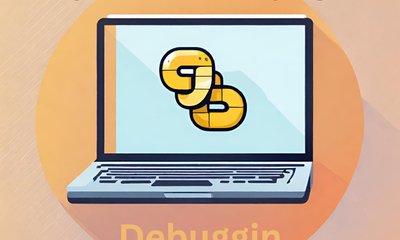How to integrate with Slack API using Python
By phuongkt, at: March 26, 2024, 10:33 a.m.
Estimated Reading Time: __READING_TIME__ minutes


Slack has emerged as a leading communication tool for teams in the digital age, enabling efficient collaboration and information sharing. For developers and businesses, integrating applications with Slack can significantly enhance productivity by automating notifications, tasks, and data sharing directly within the Slack environment. This guide will walk you through integrating with the Slack API using Python, one of the most versatile and developer-friendly programming languages.
Prerequisites
Firstly, ensure you have the following:
- A Slack account and permissions to create apps within your workspace. If you haven't got one, you can register a new slack account here Slack Create New Account!
- Python installed on your system.
Setting Up Your Slack Application
- Create a New Slack App: Visit the Slack API website and click on "Create New App".
Choose "From scratch"
Then give your app a name and select the workspace you want to install it in.
- Configure Permissions: Navigate to the "OAuth & Permissions" page in your app's settings. Here, you'll define the scopes your app requires. For a simple messaging app, you might start with
chat:write.
- Install the App to Your Workspace: After setting the necessary permissions, install the app to your workspace to generate your OAuth Access Token, which is needed for authentication.
Python Setup for Slack Integration
- Install Slack SDK: Use pip to install the Slack SDK for Python.
pip install slack_sdk - Environment Setup: Using OAuth Access Token (often start with xoxb-) when you installed the app and store it in an environment variable for security. In your terminal, run:
export SLACK_BOT_TOKEN='your_token_here'
Example: Sending a Message to a Slack Channel
Let's write a Python script that sends a "Hello, world!" message to a specific Slack Channel
- Import Slack SDK and Set Up Client:
from slack_sdk import WebClient
from slack_sdk.errors import SlackApiError
client = WebClient(token=os.environ['SLACK_BOT_TOKEN']) - Environment Setup: Store your OAuth Access Token in an environment variable for security. In your terminal, run:
try:
response = client.chat_postMessage(channel='#your_channel_name', text="Hello world!")
except SlackApiError as e:
assert e.response["error"] - Run Your Script: Execute your Python script. If everything is set up correctly, you'll see your "Hello world!" message appear in the specified Slack channel.
Conclusion
Integrating with the Slack API using Python opens up a world of possibilities for automating and enhancing your team's communication workflows. Whether you're sending notifications, creating bots, or integrating complex systems, the combination of Slack's API and Python's flexibility makes for a powerful tool in any developer's arsenal.
Remember to review the Slack API documentation regularly for updates and explore more advanced features to make the most out of your integration.


![[TIPS] Salesforce REST API: The requested resource does not exist](/media/filer_public_thumbnails/filer_public/31/a1/31a194f5-b579-415d-bc7b-1af0f602733d/salesforce_rest_api_errors.png__400x240_q85_crop_subsampling-2_upscale.jpg)
![[TIPS] Writing Better Code - Not a big deal](/media/filer_public_thumbnails/filer_public/41/c4/41c45ec4-2f5b-4cc9-830d-6ee292381dbb/better_coding_tips.png__400x240_q85_crop_subsampling-2_upscale.jpg)

